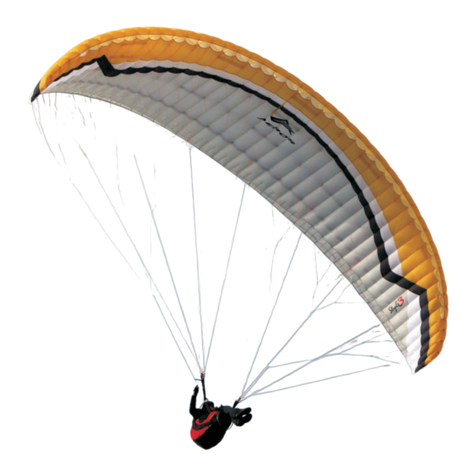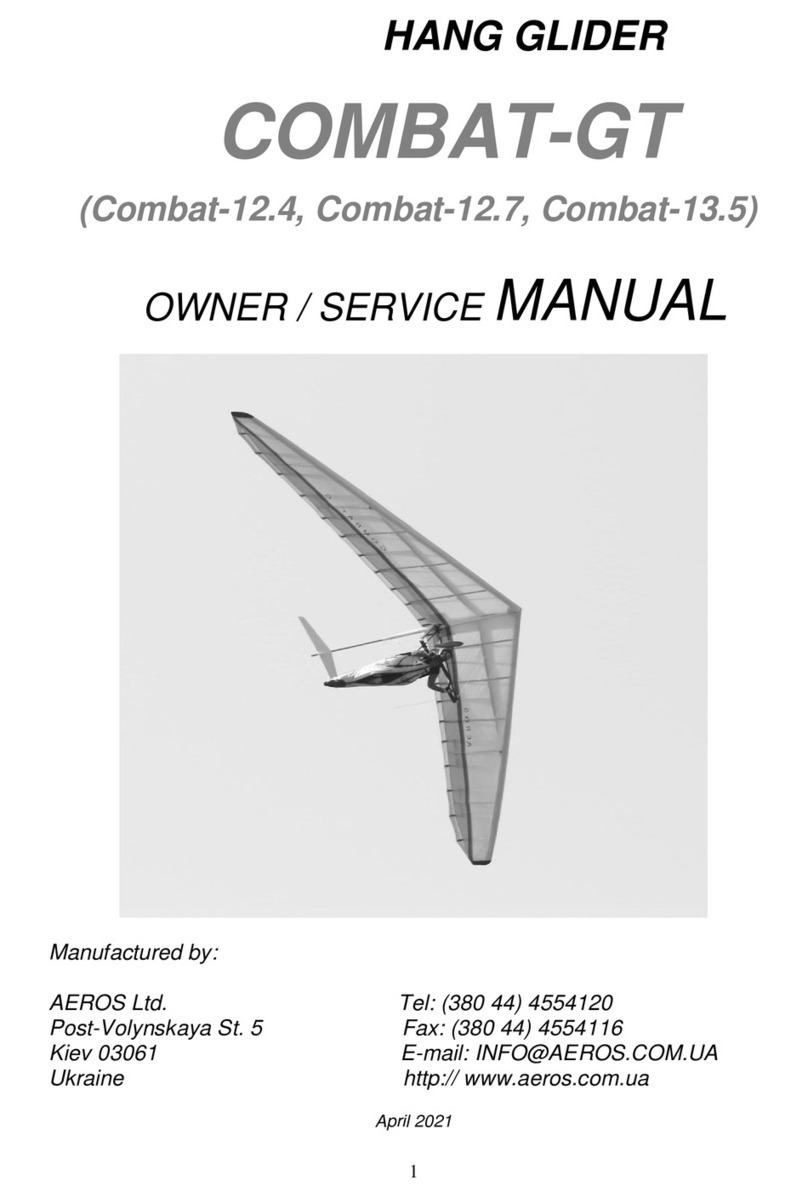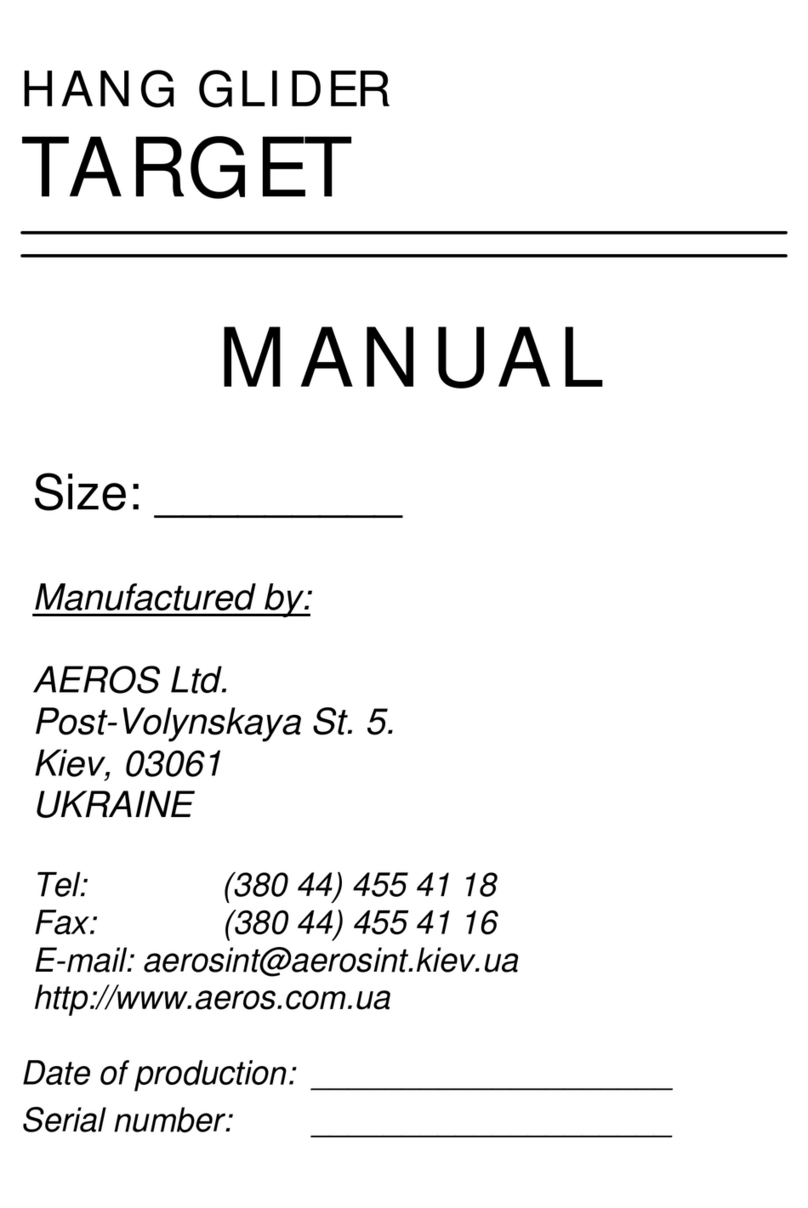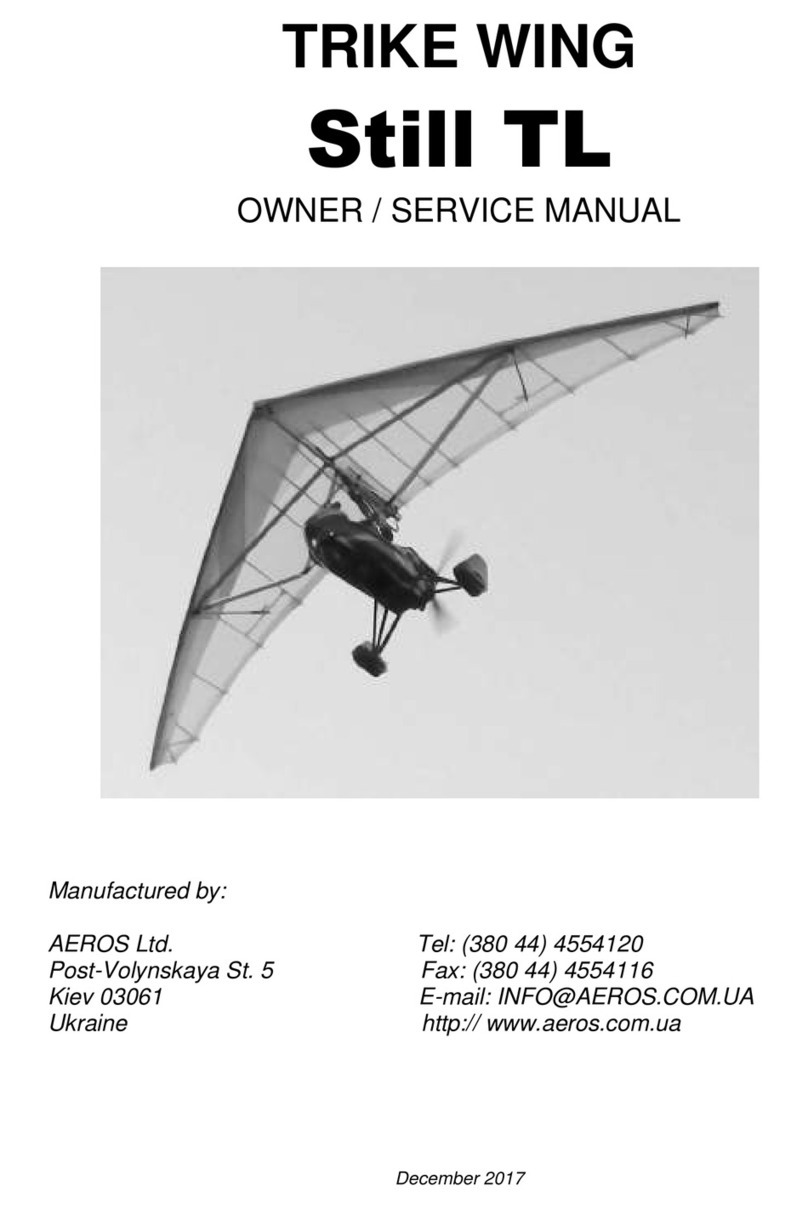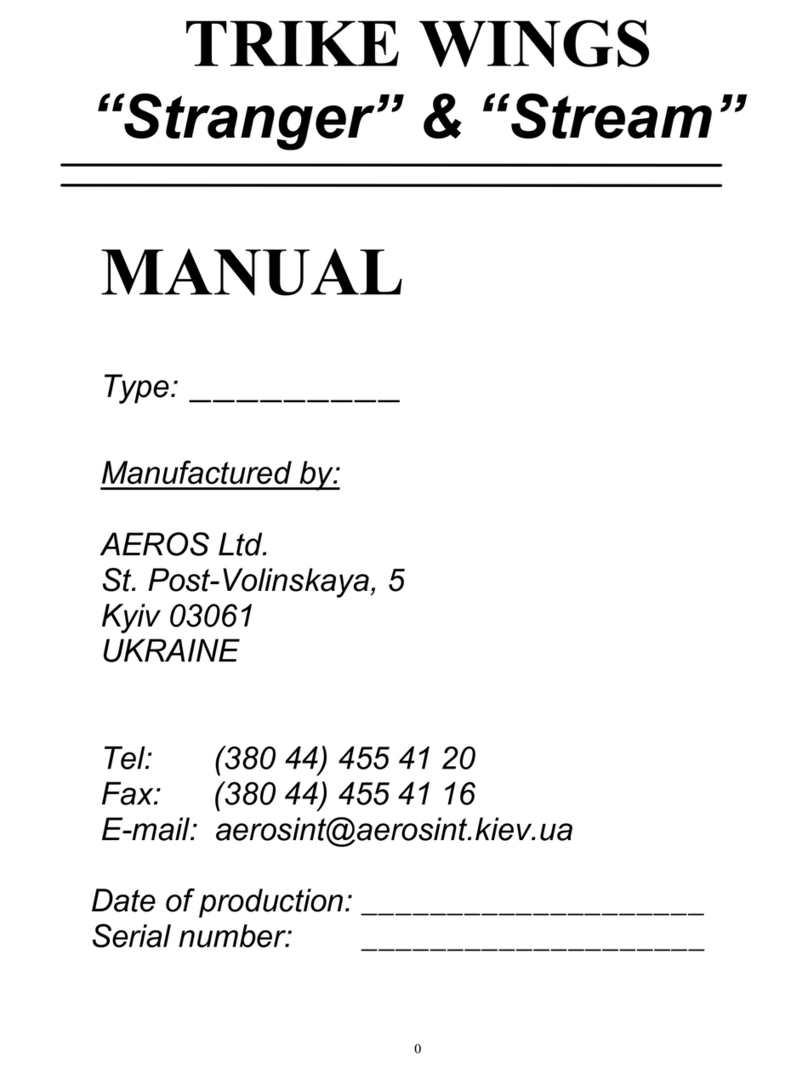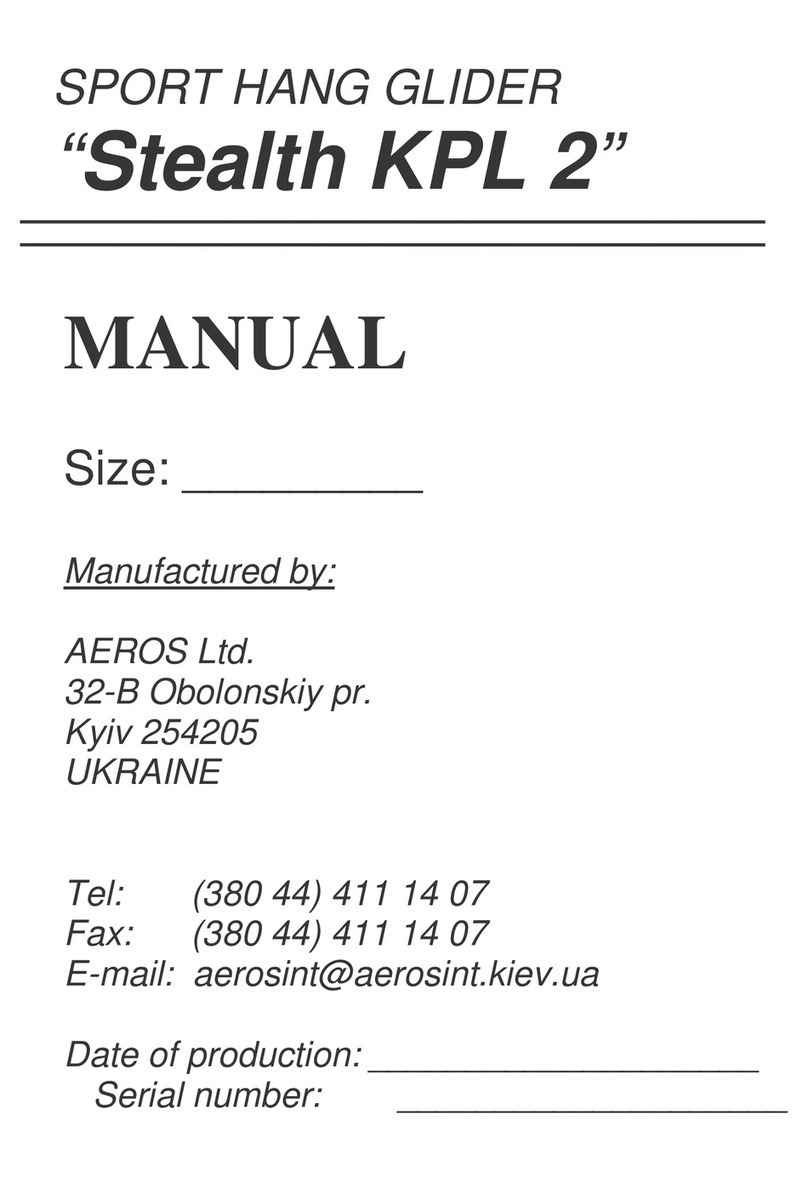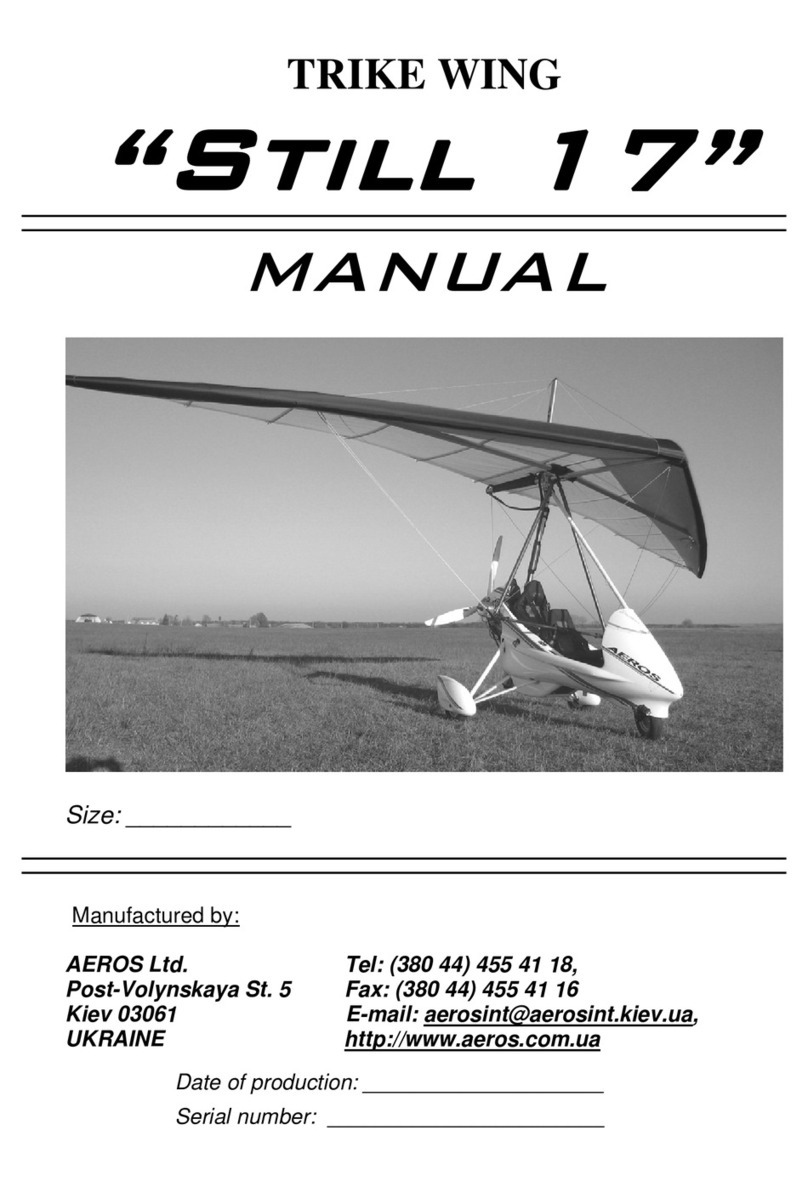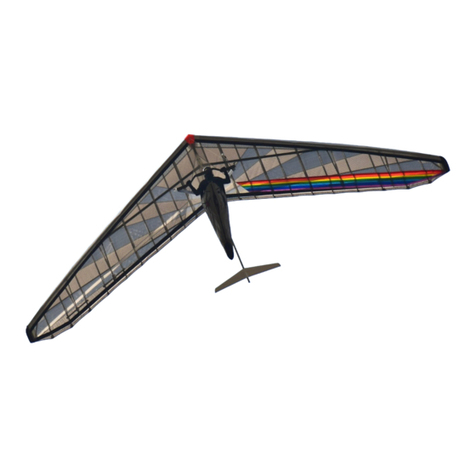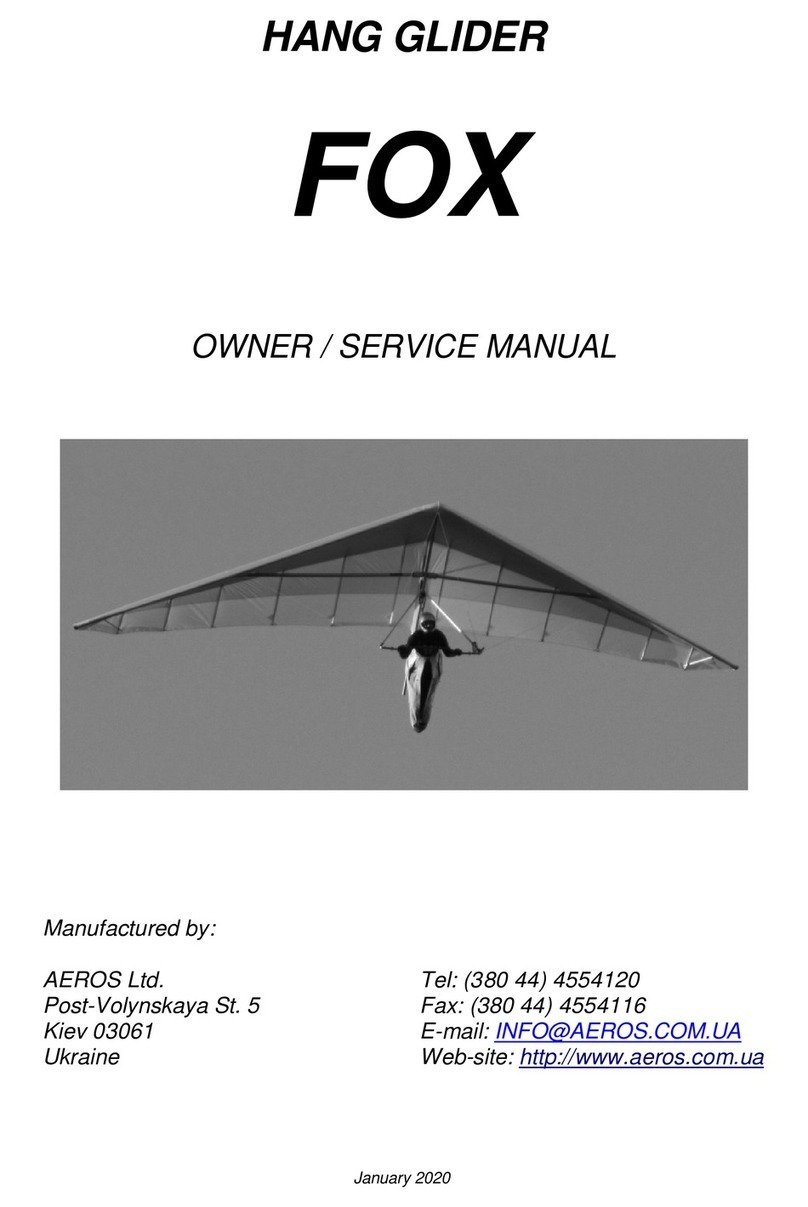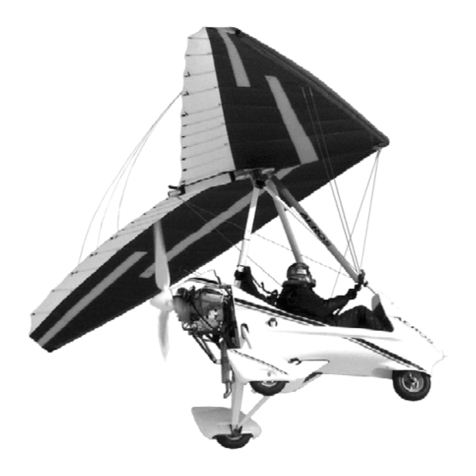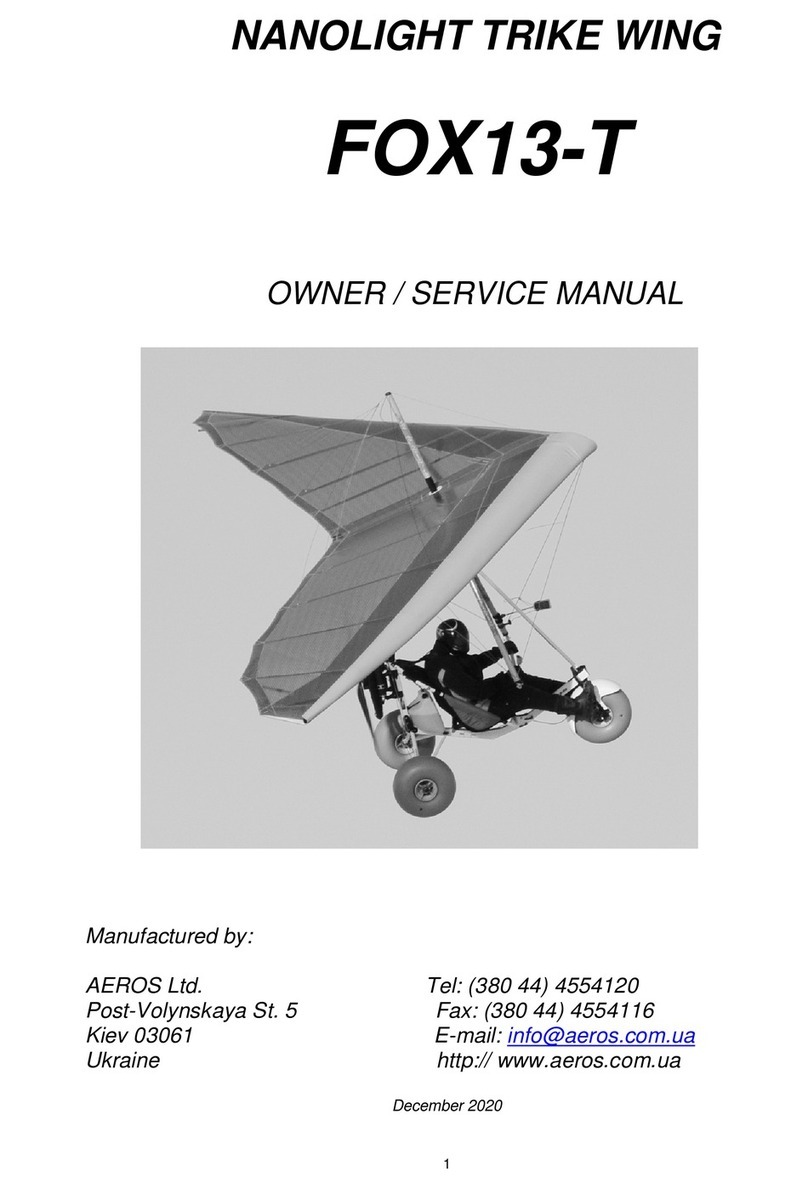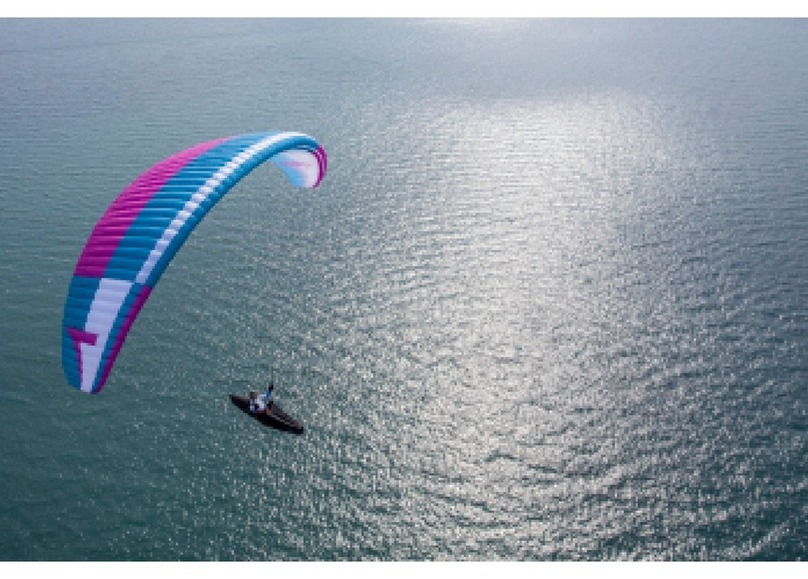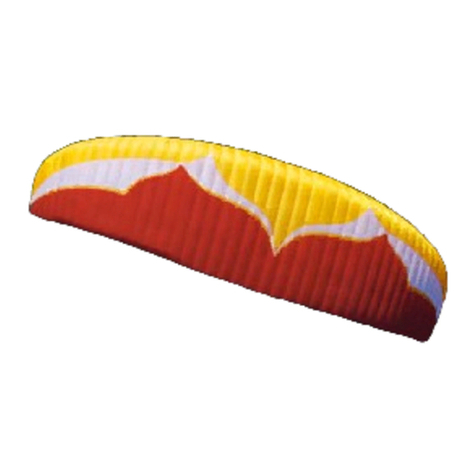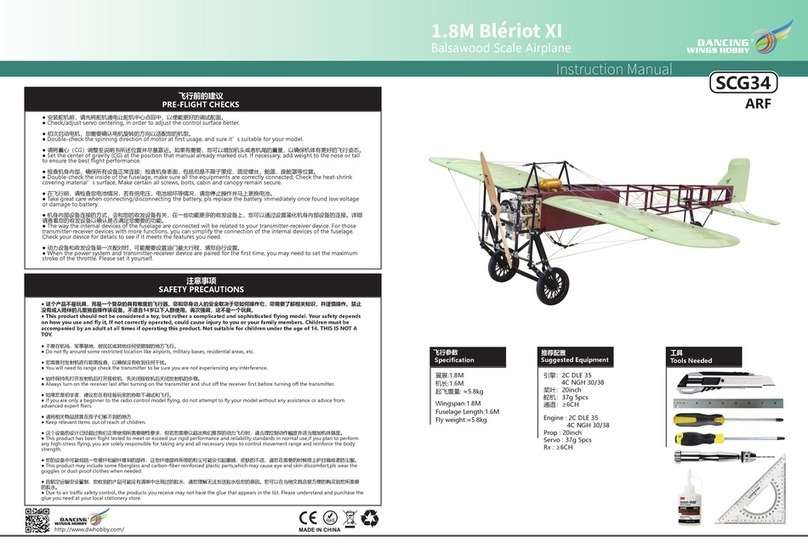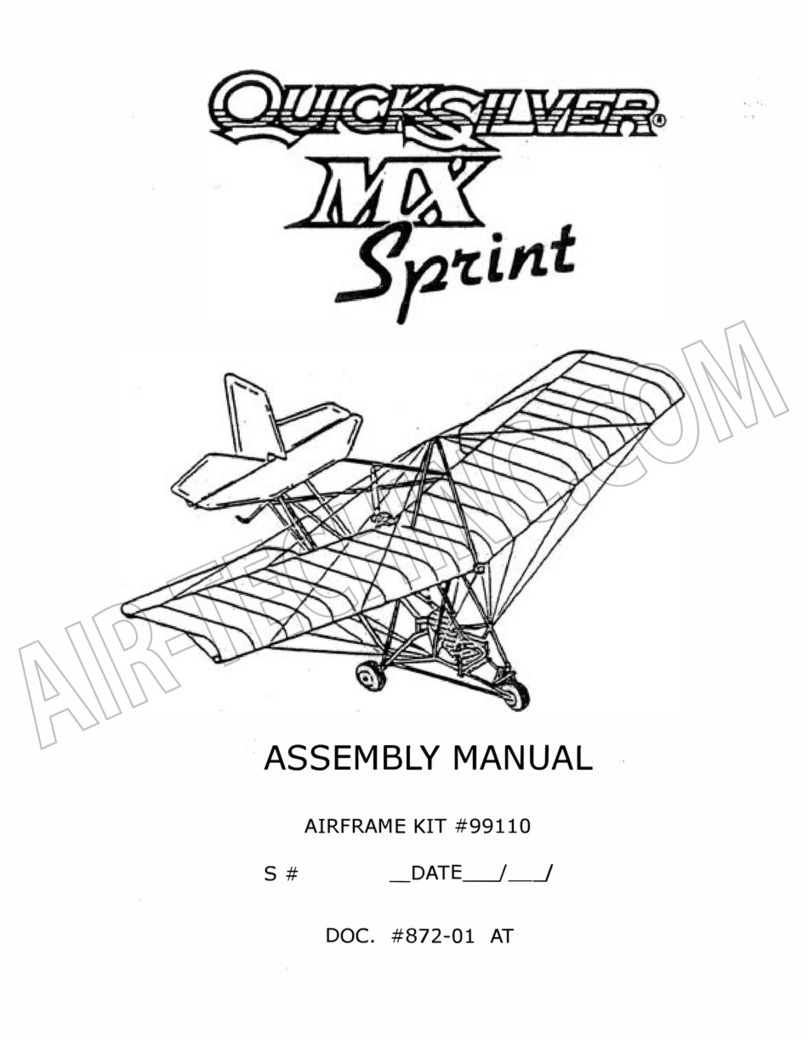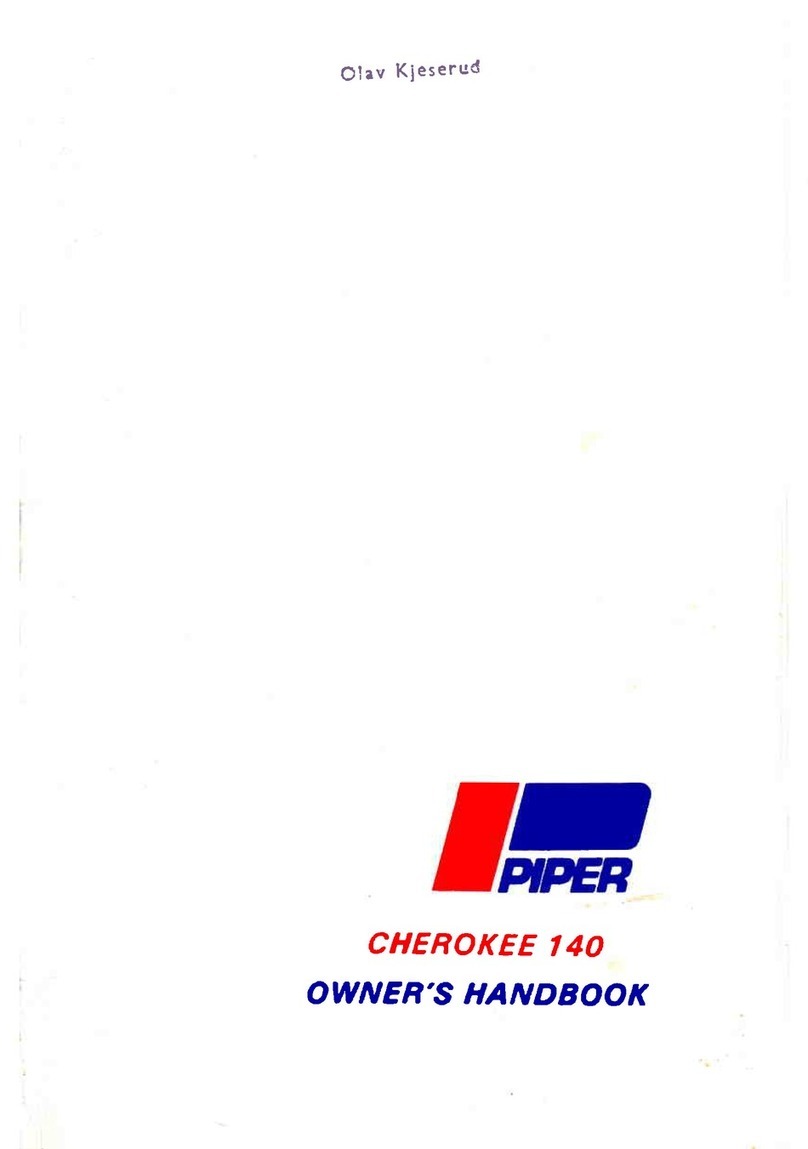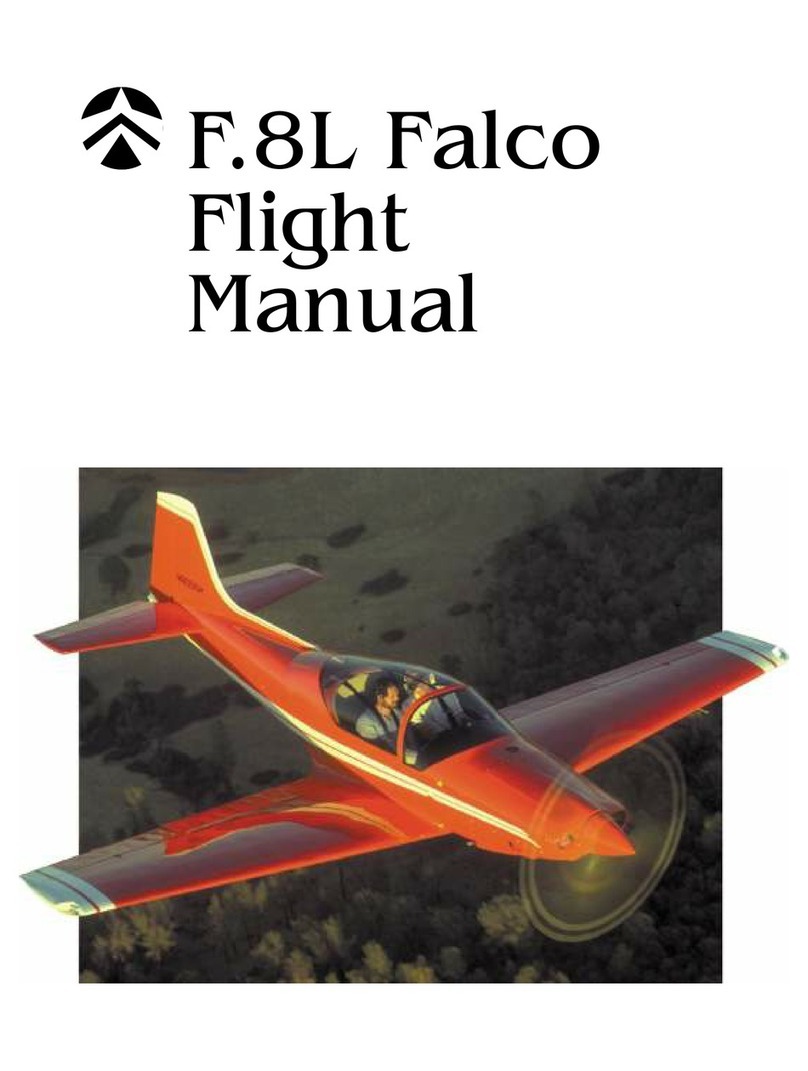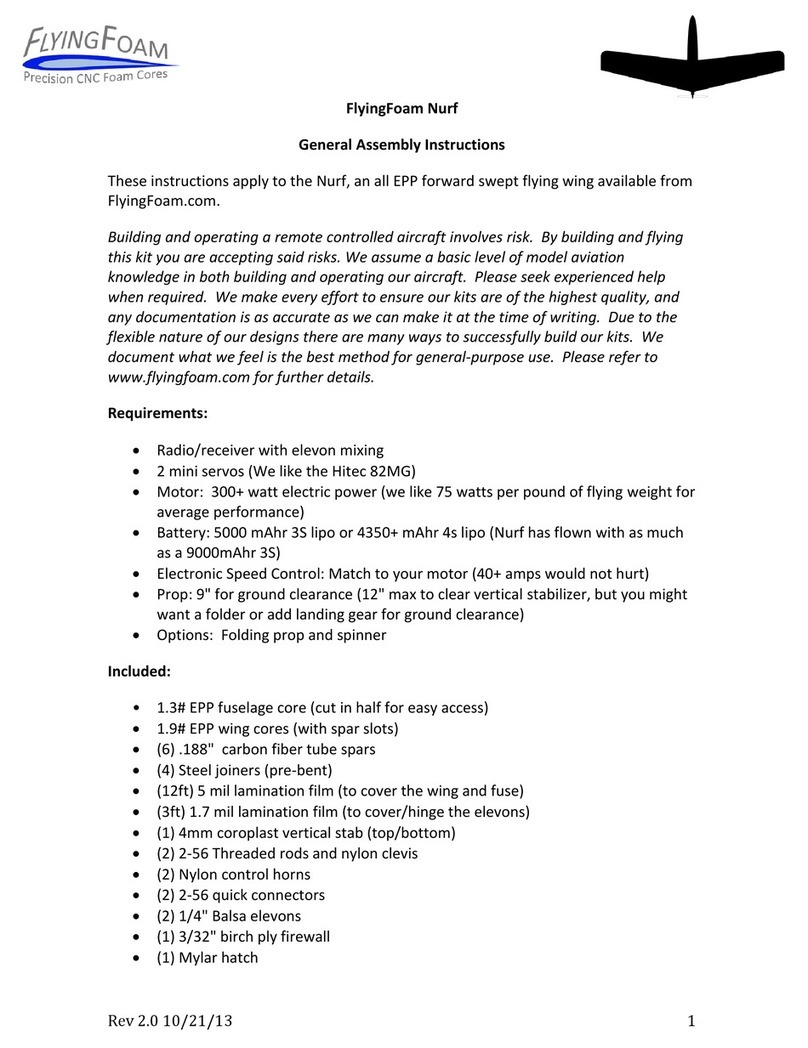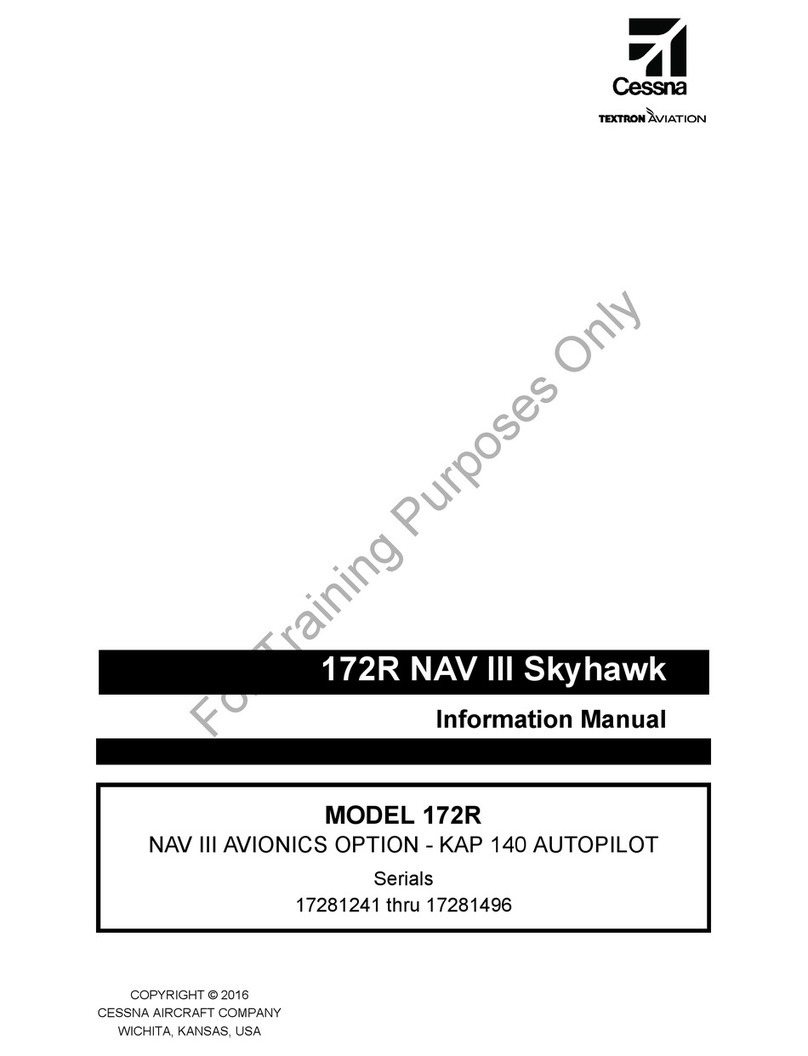
15
re-adjust the cart, recognize the launch will be more demanding, and more dangerous, as the glider will
have an increased tendency to leave the cart at a lower speed, where lateral control is reduced, and the
tendency to come off the cart with one wing low is increased. To some degree, this can be compensated
for by pulling forward through the control bar to position the speed bar below your shoulders, and holding
tight to the hold down rope. This will cause the glider to raise the keel as it begins to develop enough lift to
lift out of the cart. At that point, and not before that point, you can release the rope and ease your weight
aft to fly the glider off of the cart. Be prepared to pull in once clear of the cart if necessary so as not to
climb more quickly than the tug. Note that the bar pressure of the Fox-18 will be relatively high during the
aerotowing.
Once clear of the cart and in the position behind the tug, use firm lateral movements of short duration for
roll and directional control in order to stay in the position behind the tug. Do not move to one side of the
bar and wait for the glider to respond - this will lead to over control and being out of position, and may
lead to roll / yaw oscillations. It is better to "bump" the glider firmly in the direction of the desired
correction and then return to center. If you need more correction, bump again. In pitch, stay on top of the
situation and be as aggressive as necessary to keep the tug on the horizon.
10. LANDING THE FOX-18
Under ideal conditions, landing approaches are best done so as to include a long straight final into the
wind at a speed above best L/D speed. In a very limited field, or a field which slopes slightly downhill,
when landing in light wind, you may need to make your final approach at a slower speed, perhaps as slow
as minimum sink, in order to be able to land within the field.
In winds of less than 5 km/h (3 mph), if the landing area slopes downhill at more than 10:1, you should
seriously consider landing downwind and uphill, or crosswind, across the slope. Landing attempts, which
require slow speed approaches, maneuvering around obstacles or into a restricted area, or downwind or
crosswind landings are not recommended for pilots below an advanced skill level.
Some pilots have had difficulty with roll / yaw oscillations on final. The best way to avoid this is to fly your
entire approach at a constant airspeed, and to control your touchdown point by making adjustments to the
shape of your pattern. You should choose your approach speed based on the amount of wind and
turbulence present - in stronger wind and more turbulent air fly faster. In any case try to fly a constant
airspeed throughout the approach.
Once established on a straight final approach, with wings level and flying directly into the wind, you
should fly the glider down to where the speed bar is about 1-1.5m (3-4 ft) off the ground. At this altitude,
let the control bar out just enough to “round out” so that your descent is arrested and your flight path
parallels the ground. The remainder of your approach will consist of bleeding off excess speed while
paralleling the ground and keeping the wings level and the nose pointed in your direction of flight until it is
time to “flare” for landing.
Prior to the landing flare your body position should be generally upright, but slightly inclined forward, with
your head and shoulders forward of your hips and your legs and feet trailing slightly behind. Many pilots
make the mistake of trying to get too upright at this stage of the landing, which actually reduces your flare
authority and makes it harder to land on your feet. Your hands should be at shoulder width and shoulder
height on the uprights.
You should be relaxed, with a light grip on the bar, and your weight should be fully supported in your
harness and not at all by your arms. If your harness does not allow you to hang in the proper semi-upright
landing position “hands off,” without supporting your weight on the control bar, you will have a lot more
difficulty making good landings.
11. FOX-18 BREAKDOWN
Careful attention to the recommended rigging and de-rigging sequences will protect the glider from the
risk of unnecessary damage.
The de-rigging procedure is a direct reversal of the rigging procedure. Before you start to breakdown
your glider please reread the section 4. FOX-18 SET-UP PROCEDURE thoroughly and make sure it is
clearly understood.
11.1 Remove the nosecone. Remove any instruments.






















